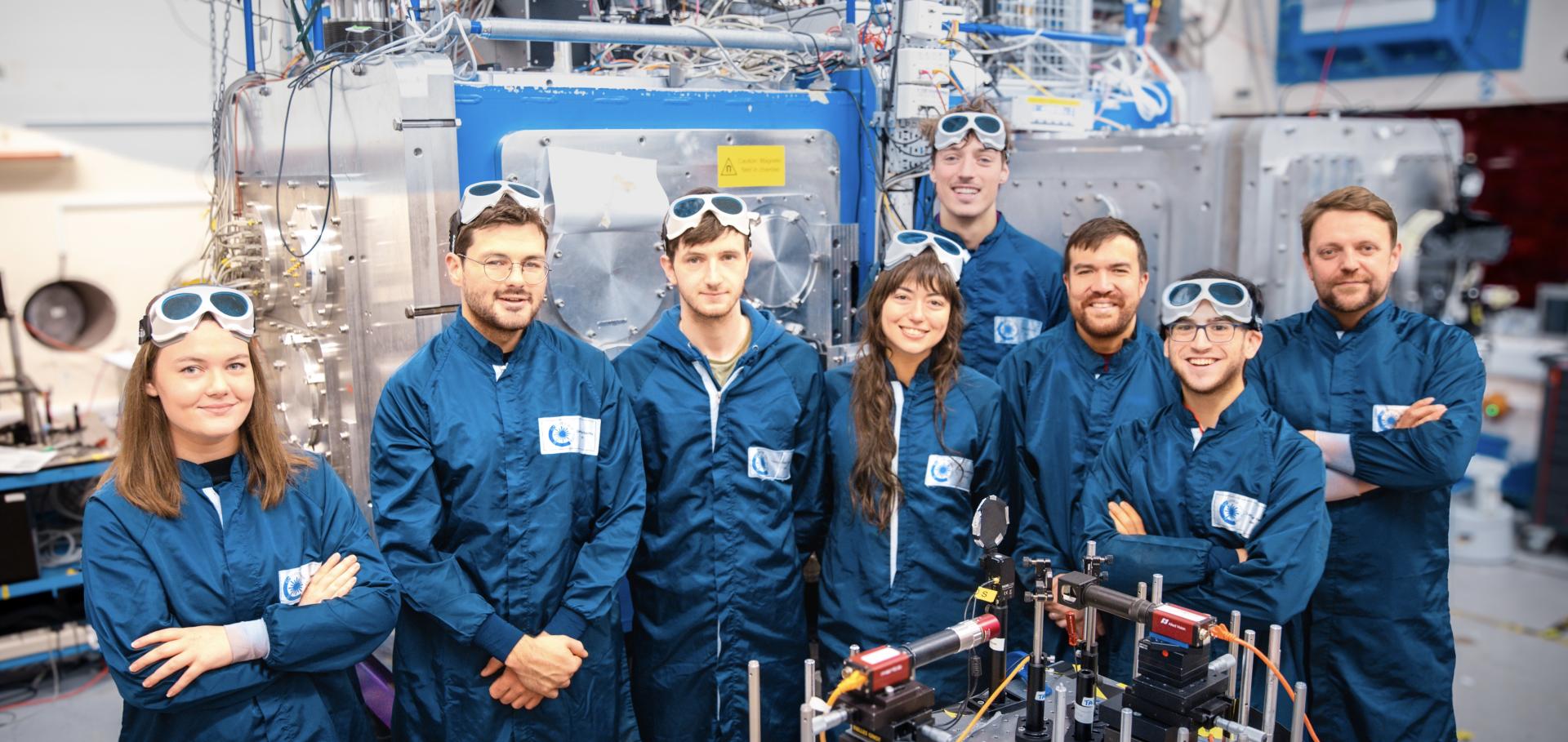Computational modelling of the semi-classical quantum vacuum in 3D
Communications Physics Springer Nature 8:1 (2025) 224
Abstract:
The global commissioning of multi-Petawatt laser systems provides unprecedented access to ultra-high electromagnetic fields for probing the quantum vacuum. However, current analytical models are limited, necessitating large-scale simulations for experimental validation. Here, we present real-time three-dimensional simulations of two quantum vacuum effects, using a semi-classical numerical solver based on the Heisenberg-Euler Lagrangian. The simulation model is benchmarked against vacuum birefringence analytical results with a counter-propagating setup. Simulations results of both plane-wave and Gaussian pulses are consistent with theoretical predictions. The solver is then applied to four-wave mixing using three Gaussian pulses with real-time information on the harmonic evolution. We provide quantitative explanations for the astigmatism in the output and produce precise estimates of the interaction time and size. Results are compared with the plane-wave model and previous numerical results. This solver paves the way for in-depth investigations of a broad spectrum of quantum vacuum effects in any arbitrary laser setup.Computational modelling of the semi-classical quantum vacuum in 3D
(2024)
Gravitational waves from high-power twisted light
Physical Review D American Physical Society 110 (2024) 044023
Abstract:
Recent advances in high-energy and high-peak-power laser systems have opened up new possibilities for fundamental physics research. In this work, the potential of twisted light for the generation of gravitational waves in the high frequency regime is explored for the first time. Focusing on Bessel beams, novel analytic expressions and numerical computations for the generated metric perturbations and associated powers are presented. The gravitational peak intensity is shown to reach 1.44 × 10−5 W.m−2 close to the source, and 1.01 × 10−19 W.m−2 ten meters away. Compelling evidence is provided that the properties of the generated gravitational waves, such as frequency, polarisation states and direction of emission, are controllable by the laser pulse parameters and optical arrangements.Attosecond and nano-Coulomb electron bunches via the Zero Vector Potential mechanism
Scientific Reports Springer Nature 14:1 (2024) 10805
Abstract:
The commissioning of multi-petawatt class laser facilities around the world is gathering pace. One of the primary motivations for these investments is the acceleration of high-quality, low-emittance electron bunches. Here we explore the interaction of a high-intensity femtosecond laser pulse with a mass-limited dense target to produce MeV attosecond electron bunches in transmission and confirm with three-dimensional simulation that such bunches have low emittance and nano-Coulomb charge. We then perform a large parameter scan from non-relativistic laser intensities to the laser-QED regime and from the critical plasma density to beyond solid density to demonstrate that the electron bunch energies and the laser pulse energy absorption into the plasma can be quantitatively described via the Zero Vector Potential mechanism. These results have wide-ranging implications for future particle accelerator science and associated technologies.Energy gain of wetted-foam implosions with auxiliary heating for inertial fusion studies
Plasma Physics and Controlled Fusion IOP Publishing 66:2 (2023) 025005

